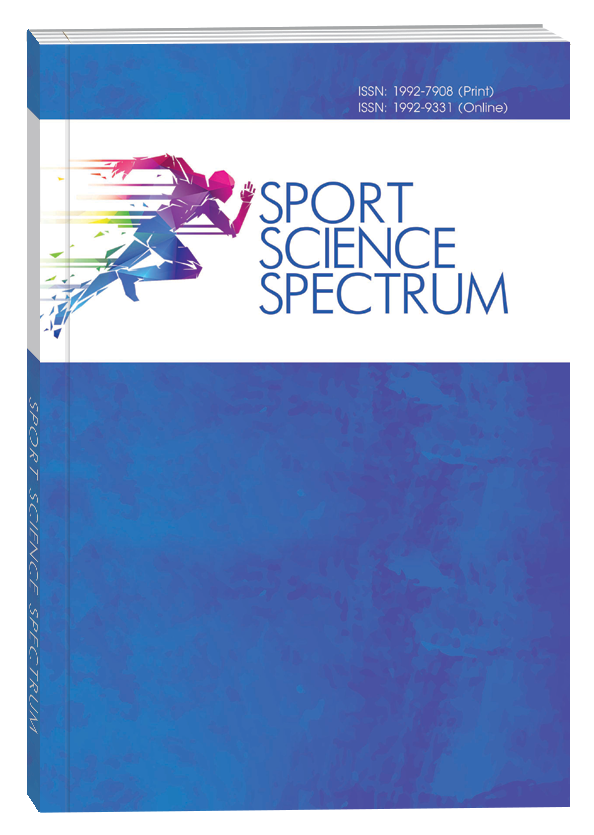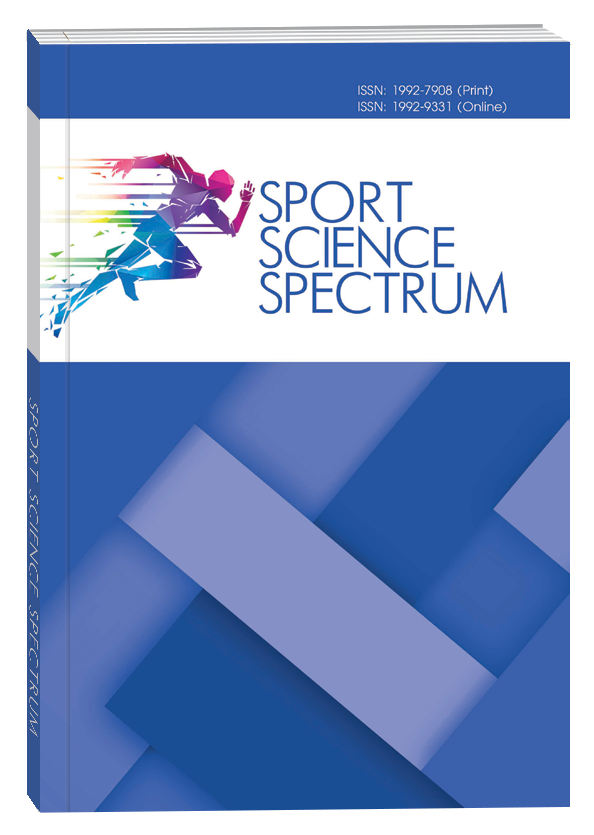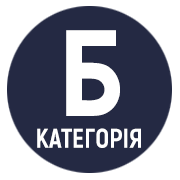ІНКЛЮЗИВНЕ ФІЗИЧНЕ ВИХОВАННЯ ДЛЯ УЧНІВ, ЯКІ ВИВЧАЮТЬ АНГЛІЙСЬКУ МОВУ, В ПОЧАТКОВИХ ШКОЛАХ КАЛІФОРНІЇ
DOI:
https://doi.org/10.32782/spectrum/2025-2-1Ключові слова:
інклюзивна освіта, вивчення англійської мови, фізична культура, універсальний дизайн навчання, інтегроване викладання, Каліфорнія, політика освітиАнотація
Статтю присвячено вивченню інклюзивної фізичної культури (ФК) для учнів, які вивчають англійську мову як другу (EL – English learners), у початкових школах, з основним акцентом на штат Каліфорнія (США) та урахуванням міжнародних підходів. З огляду на зростання чисельності EL-учнів забезпечення рівного доступу до ФК є критично важливим. Мета дослідження – проаналізувати політику, педагогічні моделі та практичні стратегії, які сприяють інклюзії EL-учнів у процесі викладання ФК, з особливим акцентом на розвиток мовних і фізичних навичок одночасно. Методи дослідження: теоретичний аналіз освітньої політики (особливо Every Student Succeeds Act та California EL Roadmap), порівняльний аналіз інструкційних моделей (Sheltered Instruction, Universal Design for Learning), синтез емпіричних прикладів з освітньої практики, огляд теоретичних засад (соціокультурна теорія, теорія засвоєння другої мови, UDL). Результати. Установлено, що інклюзивне навчання у ФК для EL-учнів ґрунтується на інтегрованому підході, що поєднує розвиток мовної компетенції з фізичною активністю. Використання візуальних матеріалів, чіткої інструкції, спільного навчання та культурно релевантного викладання сприяє кращому залученню EL-учнів. Моделі навчального плану, як-от CLIL (Content and Language Integrated Learning) та SIOP (Sheltered Instruction Observation Protocol), дозволяють одночасно формувати мовні та рухові навички. Підкреслюється роль учителя ФК як фасилітатора інклюзивного, мультимодального та культурно чутливого освітнього середовища. Висновки. Інклюзивна фізична культура є не лише засобом підтримки EL-учнів, а й чинником підвищення якості освітнього процесу загалом.Вона сприяє розвитку емпатії, командної взаємодії та поваги до різноманіття серед усіх учнів.
Посилання
1. Bell N. D., Lorenzi D. Facilitating Second Language Acquisition in Elementary and Secondary Physical Education Classes. Journal of Physical Education, Recreation & Dance. 2004. Vol. 75, no. 6. P. 46–51. URL: https://doi.org/10.1080/07303084.2004.10607257 (date of access: 13.05.2025).
2. Cal. Code Regs. Tit. 5, § 11300 – Definitions. LII / Legal Information Institute. URL: https://www.law.cornell.edu/regulations/california/5-CCR-11300 (date of access: 13.05.2025).
3. California Department of Education. (2009). Physical Education Framework for California Public Schools: Kindergarten Through Grade Twelve. Sacramento, CA: CDE. (See Chapter 7: Universal Access, pp. 214–216 for guidance on English learners in PE).
4. Clancy M. E., Hruska B. L. Developing Language Objectives for English Language Learners in Physical Education Lessons. Journal of Physical Education, Recreation & Dance. 2005. Vol. 76, no. 4. P. 30–35. URL: https://doi.org/10.1080/07303084.2005.10608234 (date of access: 13.05.2025).
5. Clancy M. E., Hruska B. L. Developing Language Objectives for English Language Learners in Physical Education Lessons. Journal of Physical Education, Recreation & Dance. 2005. Vol. 76, no. 4. P. 30–35. URL: https://doi.org/10.1080/07303084.2005.10608234 (date of access: 13.05.2025).
6. English Language Learners (ELLs), Academic Language & Physical Education A toolkit focusing on incorporating academic language into strategies to enhance the literacy of English language learners (ELL) 1 Dr. Phoebe Constantinou & Dr. Deborah A. Wuest, Ithaca College, Department of Health Promotion and Physical
7. English Learners – San Diego County Office of Education. Home | San Diego County Office of Education. SDCOE. URL: https://www.sdcoe.net/special-populations/english-learners#:~:text=California%20Education%20Code%2011300%20requires,dELD (date of access: 13.05.2025).
8. Ethnolinguistically Relevant Pedagogy: Empowering English Language Learners in Physical Education / J. W. Burden et al. Quest. 2013. Vol. 65, no. 2. P. 169–185. URL: https://doi.org/10.1080/00336297.2013.773528 (date of access: 13.05.2025).
9. Making content comprehensible for English language learners: The SIOP model / ed. by V. MaryEllen, S. Deborah. Boston, MA : Allyn and Bacon, 2000. 212 p.
10. Ong F. Physical education framework for California public schools, kindergarten through grade twelve. Sacramento : California Dept. of Education, 2009. 330 p.
11. Shape America SHAPE America – Society of Health and Physical Educators. National Standards and Grade-Level Outcomes for K-12 Physical Education. Human Kinetics, 2014. 136 p.
12. Shevchuk O., Lorenzetti S., Kohut I., Marynych V., Mytko A. Leaving no one behind: a bibliometric review of inclusion in sports. Sport Science Spectrum. 2024; 2: 27–40 DOI: 10.32782/spectrum/2024-2-5
13. Shevchuk, O., Kohut, I., & Marynych , V. (2024). Coaches readiness to work with athletes with special educational needs: a nationwide study based on the COM-B model. Slobozhanskyi Herald of Science and Sport, 28(4), 175–184. https://doi.org/10.15391/snsv.2024-4.001
14. Strategies for Supporting All Students in Health and Physical Education – SHAPE America Blog. SHAPE America Blog. URL: https://blog.shapeamerica.org/2025/03/strategies-for-supporting-all-students-in-health-and-physical-education/#:~:text=,into%20our%20health%20curriculum (date of access: 13.05.2025).
15. U.S. Department of Education & U.S. Department of Justice. (2015). Dear Colleague Letter: English Learner Students and Limited English Proficient Parents (January 7, 2015). Washington, DC: USDOE/DOJ Office for Civil Rights. URL: https://www.ed.gov/sites/ed/files/about/offices/list/ocr/letters/colleague-el-201501.pdf#:~:text=Some%20examples%20of%20when%20the,physical%20education%2C%20art%2C%20and%20music
16. Young, Shawna and Sternod, Brandon M., Practicing Culturally Responsive Pedagogy in Physical Education (November 22, 2011). Journal of Modern Education Review, Vol. 1, No. 1, pp. 1-9, 2011, SSRN. URL: https://ssrn.com/abstract=1963146
17. Маринич В., Когут І., Шевчук О. Бібліометричний аналіз наукових публікацій за напрямом «інклюзія в спортивній неформальній освіті» у базі даних Web of Science Core Collection. Спортивна медицина, фізична терапія та ерготерапія. 2024. № 1. С. 19–26. URL: https://doi.org/10.32652/spmed.2024.1.19-26
18. Шевчук О., Когут І., Маринич В. Організаційні засади реалізації інклюзивності у спорті. Теорія і методика фізичного виховання і спорту. 2023. № 3. С. 86–95. DOI: 10.32652/tmfvs.2023.3.86–95
19. Шевчук О., Когут І., Маринич В. «Колесо зміни поведінки» як інструмент удосконалення роботи тренерів на засадах інклюзивності. Sport Science Spectrum. 2024. № 3. С. 77–84. URL: https://doi.org/10.32782/spectrum/2024-3-11
20. Шевчук О., Когут І., Маринич В. Здатність, можливість та мотивація тренерів до роботи на засадах інклюзивності: кореляційне дослідження. Sport Science Spectrum. 2024. № 4. С. 54–61. DOI: https://doi.org/10.32782/spectrum/2024-4-8





